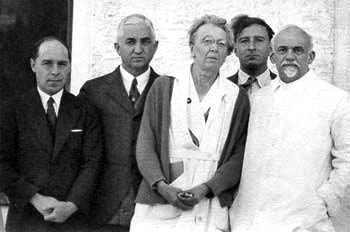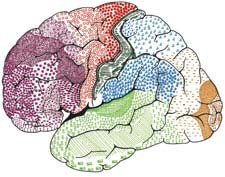Discover the intelligence and genius in Lenin brain
Lenin, the genius leader of the Communist Party, the Soviet people and the world worker movement. The study of his identity and career was very focused by the Soviet Communist Party.
Recently, the German historian Iohen Rikhter released readers the book "Race, caste and inspiration" that records the history of Lenin and the process of studying his brain through documents that have been provided by doctors. Germans meticulously researched for more than a decade.
Lenin's health was severely affected after the stresses of revolution and civil war. His assassination made the situation worse. The bullet was still in Lenin's neck, so close to the spine that it was hard to remove during medical technology at the time.
In May 1922, Lenin suffered a stroke for the first time. People with paralysis on the right side and have to reduce the intensity of work. After the second stroke in December of that year, Lenin had to give up almost all political activities. In March 1923, he suffered a third stroke and was bedridden, unable to even speak.
After the first stroke, Lenin read to the secretary to record some documents about the government and his wife. The most famous of which is Lenin's Testament, about some socio-economic development views, building leadership in the Soviet Union.
Lenin died on January 21, 1924, at the age of 53. The official reason for his death was cerebral arteriosclerosis, or a fourth stroke because the bullet was still in his neck after the assassination. cause.
A group of Russian-German professors studied the brain of the talented leader Lenin.

Genius leader Lenin. (Photo: CAND)
After Lenin died, the German physician Oscar Vogt received a letter from the leading Russian neurologist Lazar Minor, announcing that a specialized committee was formed and discussed his brain research plan. Lenin and gave the scientific evidence of his genius. The tradition of studying the brains of geniuses after their death is long established.
In 1798, Austrian physician Franz Iosef Gall declared that human intelligence was directly related to the size of the brain and even the shape and structure of the skull. According to Gall, the areas that control perception are located in the front brain region, and the reflex area - in the back brain.
One of the most successful scientists in this field in the early twentieth century was Oscar Vogt (1870-1959). In 1898, this young but very famous doctor received funding from Fridrikh Alfred Krupp, a German steel giant, to set up a neurological research center in Berlin (which was the precursor of the Institute of Biology. Nerve Berlin).

Lenin's brain (Image: Nature)
Vogt's research work is supported by geneticists. After Lenin's death, the German scientist was placed on a double task: First, it must be shown that Lenin was alert and lucid until his death; and second, no less important - Lenin is not a normal person. It was a genius. People want to find out the unique characteristics of that genius brain.
Vogt hesitated at first. But he decided, even gradually, to be excited, after receiving a letter from his colleague Otfrid Ferster suggesting he could mobilize Health Minister Semashko and his sister Lenin to transfer his brain to Berlin. Of course, Vogt is not the only candidate for this task.
But the decision ultimately benefited him not only due to his professional reputation. He also had the support of politicians from both the Soviet Union and Germany. In January 1925, Vogt arrived in Moscow, and the first session of the Medical Council was attended by Soviet neuroscientists L. Minor, V. Krramer, anthropologist V.Bunak, pathologist A. Agikosov and others have stated that "it is possible to prove Lenin's genius with concrete evidence."
Even in the first stage, it is possible to clarify the differences in Lenin's brain structure. They will compare Lenin's brain with the brains of others, and on the basis of data that build up a portrait of his intellect.
However, according to Vogt, Moscow did not have all the tools, chemicals, and specialists needed for the job, so he offered to move Lenin's brain to Berlin. But the Politburo of the Soviet Union decided not to agree. Therefore, Cecil Vogt and Margareth Vurlke were called to Moscow, bringing along loads of machines. The work is placed under the direction of Vogt, which is clearly stated in the contract: "Professor Vogt will report on the progress of the work, report to the Council about the times he must be in Moscow". The duration of the job is not specified, it seems that the work was anticipated to take years.
Vogt started his work in the right hemisphere, because this is the less destructive disease. He asked his entire medical records and medical history along with his biography for "a comprehensive study of personality." For the Soviet Union, the contract signed with Vogt also meant that the country's brain specialist had access to the world's top technology.
On November 12, 1927, the Brain Institute - one of the leading Soviet scientific research institutions, was established in Bolsoi Yakimank in Zamoscvorechie region, following the model of Brain Institute in Berlin and its first director was Vogt. Here, research is conducted on the brains of exceptional people, and the brain structure of different races is compared.
At the institute's founding ceremony, Vogt reported the first research results. After two-and-a-half years, the study found that: "A clear picture of the differences in the structure of Lenin brain and normal human brain has been formed." In Lenin brain, pyramidal cells develop. more powerful, the number of associated fibers also links them more, "and as Vogt concludes, Lenin's brain" facilities "are" significantly richer "and the player's ability to associate unusual development.
The Pravda newspaper published a large article at once, claiming that the German professor explained the question of Lenin's genius, his ability to guide, make decisions and act in complex situations. However, these are initial conclusions, because most of the tissue samples in Lenin's brain have not been thoroughly studied. Anyway, when announcing these first results, he insisted the more detailed analysis would continue.
Two years later, on November 10, 1929, Vogt published the first official report on Lenin's brain. At that time, in the brain collection stored at the Institute, in addition to Lenin's brain, there were about 30 brains of Party and State leaders and 39 brains of different ethnic groups. The study of these brains will answer the question, whether racial characteristics affect brain structure? And the negative answer to this question has been obtained.
However, meticulous research on Lenin brain shows that he has a truly different brain with pyramid cells of an unprecedented size, their number is also much larger than normal human brain. significantly.
In 1967, the brain institute team was preparing to publish the book "Brain Lenin - cell and structural research", but the publication of the entire contents of the book has not come true. It was not until 1993 that a very small part of it was revealed in two articles in the anthology "Physiological Achievements".
By then, the perspective on the influence of brain structure on human intelligence or genius had changed. Science has come a long way in this area, and most visually sees the thought formation process in the human brain.
This year 131 international organizations, from 73 countries, partnered with the PRA in Washington, D.C., and its Hernando De Soto Fellow Prof. Sary Levy-Carciente to produce the 17th edition of the IPRI..
Email: [email protected]
The articles on mssresource.com.ng are collected by us on the internet. If you find any infringing articles, please contact us and we will delete them immediately. Thank you!
Copyright 2004-2020 www.mssresource.com.ng , all rights reserved.